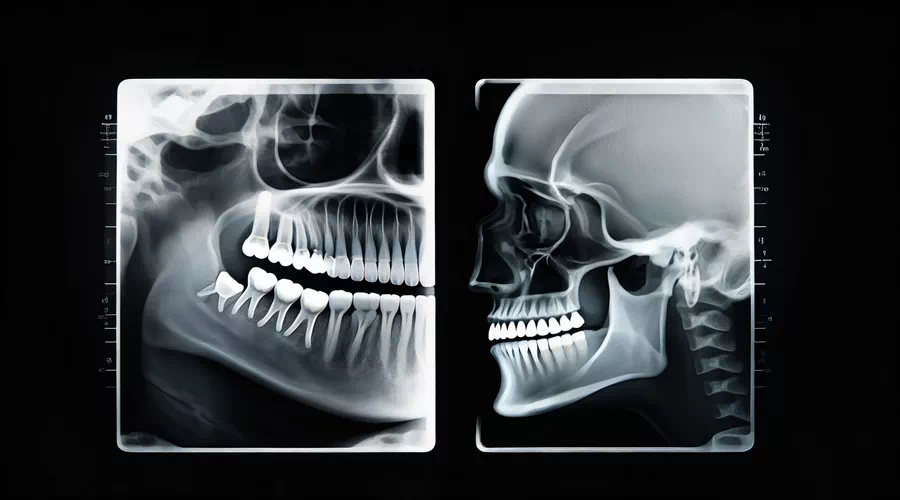Dental X-Rays in Lorton VA
Dental X-rays, also known as radiographs, are a crucial diagnostic tool in modern dentistry. They provide dentists with a visual representation of the structures beneath the gum line, allowing them to detect problems that might not be visible during a routine clinical examination.
Consult the experts

Dental X-rays

In dental X-rays, the rays passing through the oral cavity are absorbed differently by tissues of different densities. Hard structures, such as bones and teeth, absorb more radiation than soft tissues, such as cheeks and gums. This difference in absorption forms the image on the X-ray film: teeth appear lighter because fewer rays reach the film.
In contrast, Cavities lesions and gum inflammation appear darker due to increased permeability to X-rays. Analysis of X-rays allows the dentist to detect hidden diseases and anomalies with high accuracy.
What types of dental x-rays are taken at Lorton Dentist?

- Intraoral X-rays are taken inside the mouth and provide detailed images of individual teeth and surrounding bone. These include periapical X-rays, which show the entire tooth from crown to root, and bitewing X-rays, which capture the crowns of the upper and lower teeth in a specific area, allowing dentists to detect cavities between teeth.
- Extraoral X-rays, on the other hand, are taken outside the mouth and provide a broader view of the jaws and skull. Panoramic capture a wide view of the entire mouth, including all teeth, sinuses, and jaw joints. Such images are also taken during dental implants.
Do you want to identify hidden dental problems and receive timely help?
Book an Appointment Today

We will provide precise monitoring of your oral health using Dental radiography.
At Lorton Dentist we use cutting-edge imaging technologies.
We will detect infections, cysts or tumors at the earliest stages.
You can contact the practice online or call the number provided to schedule an appointment.
Benefits
Despite their benefits, dental X-rays involve exposure to radiation, which is a potential health concern.
However, the amount of radiation used in dental X-rays is very low, and modern techniques and equipment minimize the risk.
Dentists follow strict guidelines to ensure that patients are exposed to the lowest possible dose of radiation, using lead aprons and thyroid collars to shield vulnerable areas of the body.
The benefits of this procedure far outweigh the risks, especially when used wisely and according to established protocols.
How often can you get dental x-rays?
The frequency with which dental x-rays should be taken depends on individual circumstances. Patients at high risk for tooth decay or periodontal disease may require x-rays more frequently than those with good oral health. Children and adolescents whose teeth and jaws are still developing may also require more frequent procedure.
Our dentists assess each patient’s individual needs and determine the appropriate frequency of this procedure based on their oral history, clinical examination, and risk factors.
Questions and Answers
How fast can dental x-rays be done?
At Lorton Dentist, a modern digital x-ray examination of all teeth usually takes no more than 10 minutes, making the process quick and convenient for the patient.
Are dental x-rays allowed during pregnancy?
If necessary, the procedure can be safely performed on pregnant women by using special protective equipment and reducing the time of exposure to radiation. Be sure to inform your doctor about your condition before the procedure.
